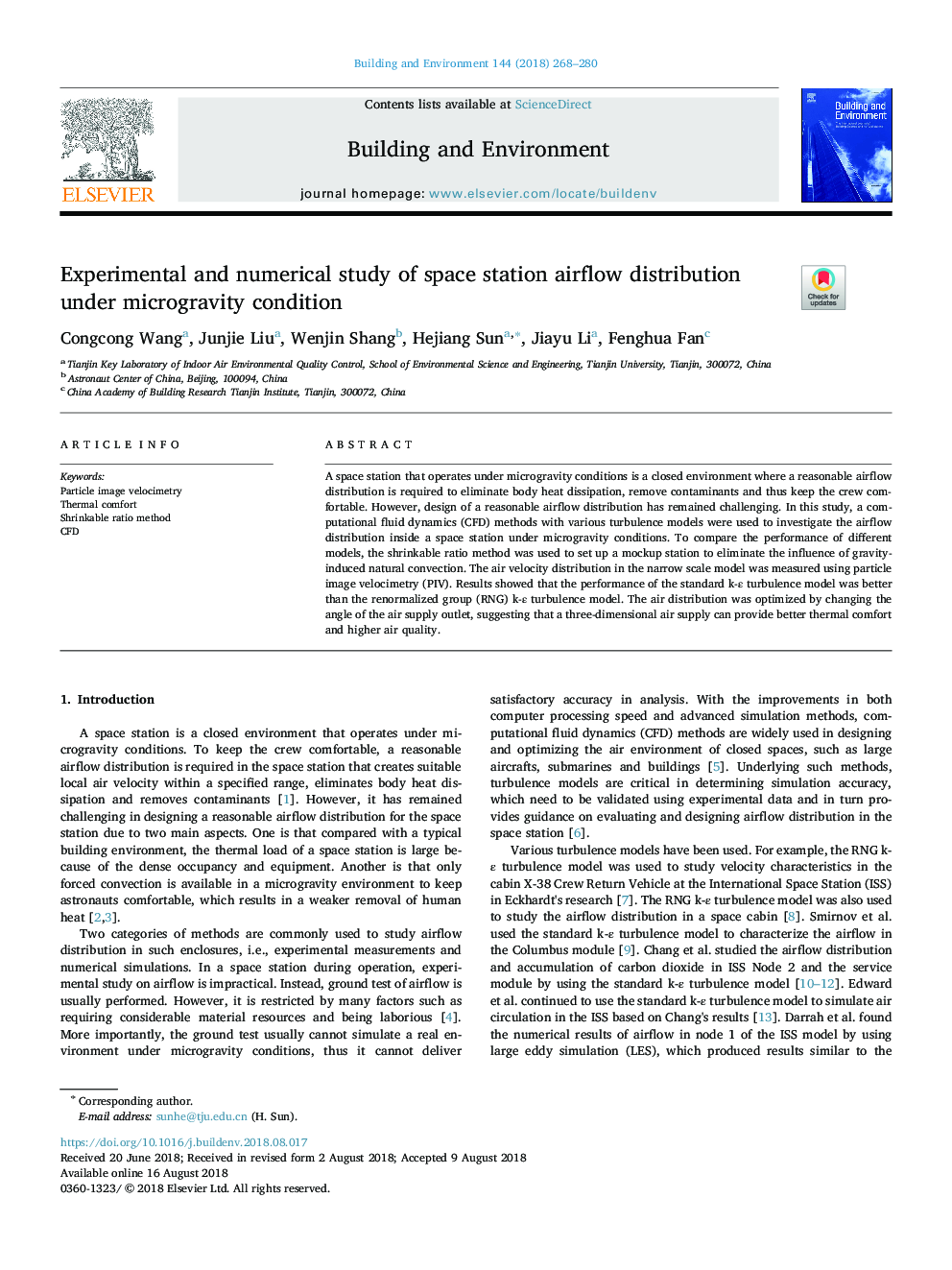| Article ID | Journal | Published Year | Pages | File Type |
|---|---|---|---|---|
| 11000952 | Building and Environment | 2018 | 13 Pages |
Abstract
A space station that operates under microgravity conditions is a closed environment where a reasonable airflow distribution is required to eliminate body heat dissipation, remove contaminants and thus keep the crew comfortable. However, design of a reasonable airflow distribution has remained challenging. In this study, a computational fluid dynamics (CFD) methods with various turbulence models were used to investigate the airflow distribution inside a space station under microgravity conditions. To compare the performance of different models, the shrinkable ratio method was used to set up a mockup station to eliminate the influence of gravity-induced natural convection. The air velocity distribution in the narrow scale model was measured using particle image velocimetry (PIV). Results showed that the performance of the standard k-ε turbulence model was better than the renormalized group (RNG) k-ε turbulence model. The air distribution was optimized by changing the angle of the air supply outlet, suggesting that a three-dimensional air supply can provide better thermal comfort and higher air quality.
Related Topics
Physical Sciences and Engineering
Energy
Renewable Energy, Sustainability and the Environment
Authors
Congcong Wang, Junjie Liu, Wenjin Shang, Hejiang Sun, Jiayu Li, Fenghua Fan,
